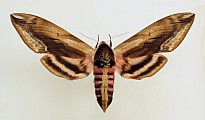
Русские, остановите эту войну! Спасите Свободную Украину!
Russians, stop this war! Save Free Ukraine!
Biodiversity Map
Taxa

Sphinx — subordinate taxa:
Taxon count: 3
-
Arthropodaphylum
Click to switch
to select orders
and filters > -
Hexapodasubphylum
Click to switch
to select orders
and filters > -
Insectaclass
Click to switch
to select orders
and filters > -
Lepidopteraorder
Click to set
as the main taxon
and as a base
← of the left panel > -
Bombycoideasuperfamily
Click to set
as the main taxon
and as a base
← of the left panel > -
Sphingidaefamily
Click to set
as the main taxon
and as a base
← of the left panel > -
Sphinginaesubfamily
Click to set
as the main taxon
and as a base
← of the left panel > -
Sphinxgenus
Click to set
as the main taxon
and as a base
← of the left panel >
PL
YES
name status: valid name
BioMap ID: 1203271
taxon code: 2217
taxonomy checked: YES
- Views:
- Overview
- Records
- Collections
- Illustrations
- Photos
- Map
Data on distribution in Poland

Statistics
- Records: 16
- Publications: no data
- Collections: 6
- Publication authors: no data
- Illustrations (iconography): 3
- Photos (specimen/observation): 4
Taxon description
Duży ten motyl, wielkością prawie dorównujący trupiej główce spotykany jest pospolicie, szczególnie w stadium gąsienicy. Czas lotu motyli trwa od V do VII. Gąsienice do ostatniego linienia mają szorstką powierzchnię skóry, po ostatnim — gładką i błyszczącą, żerują od VII do IX na liściach bzu, ligustru, śnieguliczki, jesionu, klonu polnego, kaliny, tawuły i forsycji. Na zimę zakopują się do ziemi, gdzie przeobrażają się w poczwarki. Poczwarki zimują najczęściej raz, zdarzają się przelegiwania dwukrotne. Drugie pokolenie motyli w ciągu jednego roku występuje sporadycznie. Motyle wielu gatunków zawisaków należą do wytrzymałych i szybkich lotników. Pobierając nektar z kwiatów długą trąbką, wiszą w powietrzu jak helikoptery, a obecność ich o zmroku zdradzają jasne, chwiejące się kielichy kwiatów.
[104: Sphinx ligustri (Linnaeus, 1758) – zawisak tawuiec]
[104: Sphinx ligustri (Linnaeus, 1758) – zawisak tawuiec]
External data sources
- Ostatnie rekordy
-
1041667
 ⊡
⊡ Sphingidae: Sphinx ligustri, PL, Podlasie, Biebrzański P.N., podlaskie, Mońki, Trzcianne, Barwik, UTM FE01, 2016, leg. J. van Holten
Sphingidae: Sphinx ligustri, PL, Podlasie, Biebrzański P.N., podlaskie, Mońki, Trzcianne, Barwik, UTM FE01, 2016, leg. J. van Holten -
1028085
 ×
× Sphingidae: Sphinx ligustri (Heintze 1990)
Sphingidae: Sphinx ligustri (Heintze 1990) -
869316
 ⊡
⊡ Sphingidae: Sphinx ligustri, PL, Pojezierze Pomorskie, pomorskie, Bukowiny, UTM CE35, 2009, leg. S. Łuczkowski
Sphingidae: Sphinx ligustri, PL, Pojezierze Pomorskie, pomorskie, Bukowiny, UTM CE35, 2009, leg. S. Łuczkowski -
869315
 ×
× Sphingidae: Sphinx ligustri, PL, pomorskie, Kleszczewo Kościerskie, UTM CE28, 2010, leg. S. Łuczkowski
Sphingidae: Sphinx ligustri, PL, pomorskie, Kleszczewo Kościerskie, UTM CE28, 2010, leg. S. Łuczkowski -
847029
 ⊡
⊡ Sphingidae: Sphinx ligustri, PL, Puszcza Białowieska, podlaskie, Białowieża, UTM FD94, 2001
Sphingidae: Sphinx ligustri, PL, Puszcza Białowieska, podlaskie, Białowieża, UTM FD94, 2001 -
846572
 ⊡
⊡ Sphingidae: Sphinx ligustri, PL, Nizina Mazowiecka, łódzkie, Raducz, UTM DC54, 2001, leg. G. Banasiak
Sphingidae: Sphinx ligustri, PL, Nizina Mazowiecka, łódzkie, Raducz, UTM DC54, 2001, leg. G. Banasiak -
846024
 ⊡
⊡ Sphingidae: Sphinx ligustri, PL, Górny Śląsk, opolskie, Kolonowskie, UTM CB11, 2006, leg. T. Blaik
Sphingidae: Sphinx ligustri, PL, Górny Śląsk, opolskie, Kolonowskie, UTM CB11, 2006, leg. T. Blaik -
846023
 ⊡
⊡ Sphingidae: Sphinx ligustri, PL, Górny Śląsk, opolskie, Kolonowskie, UTM CB11, 2006, leg. T. Blaik
Sphingidae: Sphinx ligustri, PL, Górny Śląsk, opolskie, Kolonowskie, UTM CB11, 2006, leg. T. Blaik -
843753
 ⊡
⊡ Sphingidae: Sphinx ligustri, PL, Wyżyna Małopolska, świętokrzyskie, Pińczów, UTM DA69, 2004, leg. J. Buszko
Sphingidae: Sphinx ligustri, PL, Wyżyna Małopolska, świętokrzyskie, Pińczów, UTM DA69, 2004, leg. J. Buszko -
840564
 ⊡
⊡ Sphingidae: Sphinx ligustri, PL, Pojezierze Mazurskie, warmińsko-mazurskie, Giżycko, UTM EE58, 1969, leg. J. Buszko
Sphingidae: Sphinx ligustri, PL, Pojezierze Mazurskie, warmińsko-mazurskie, Giżycko, UTM EE58, 1969, leg. J. Buszko - ... more














